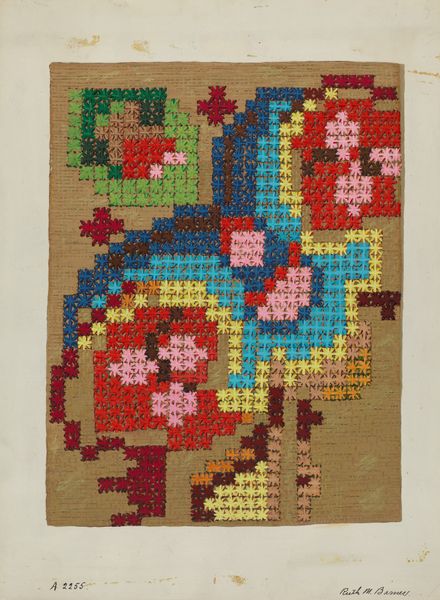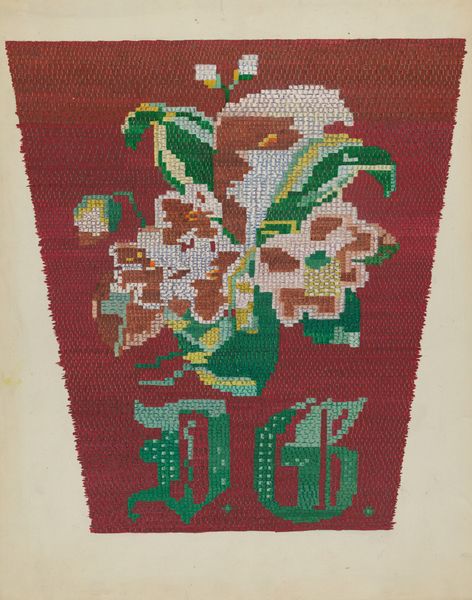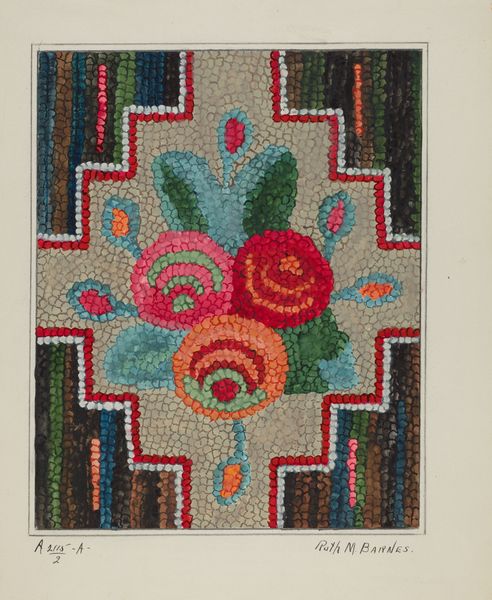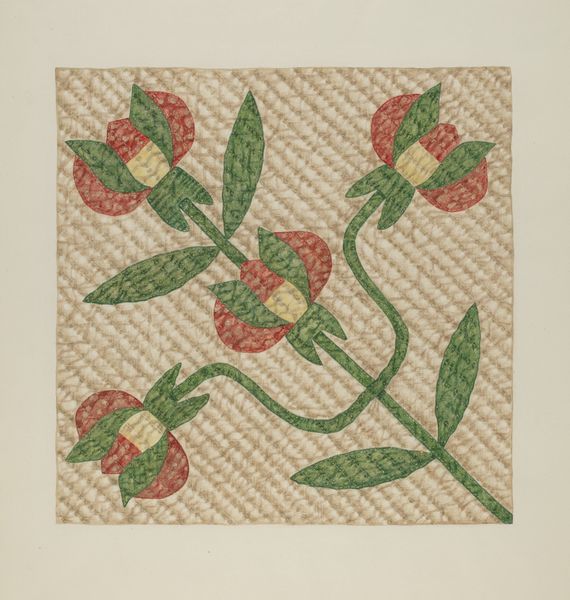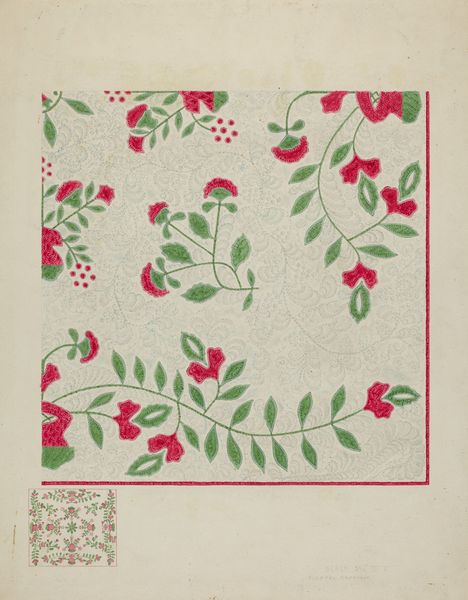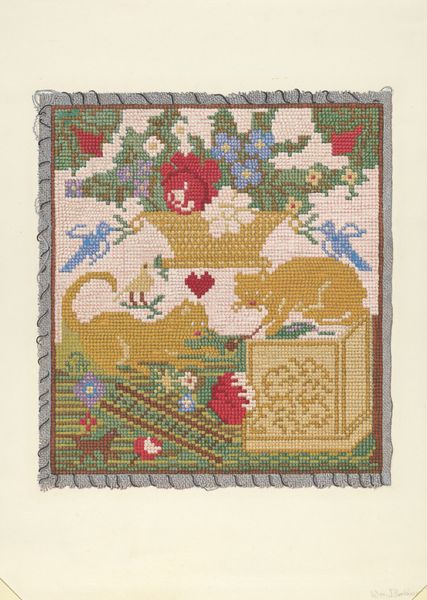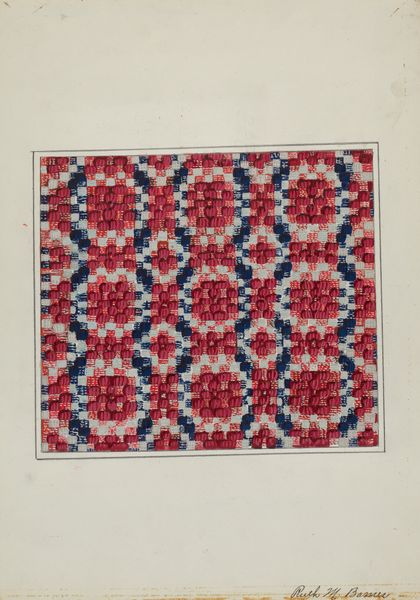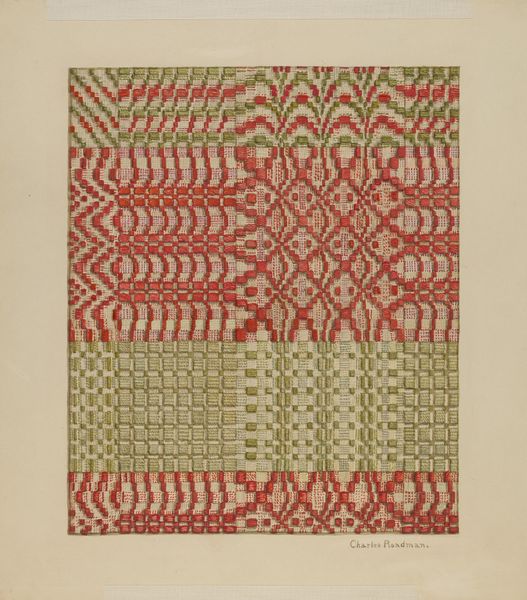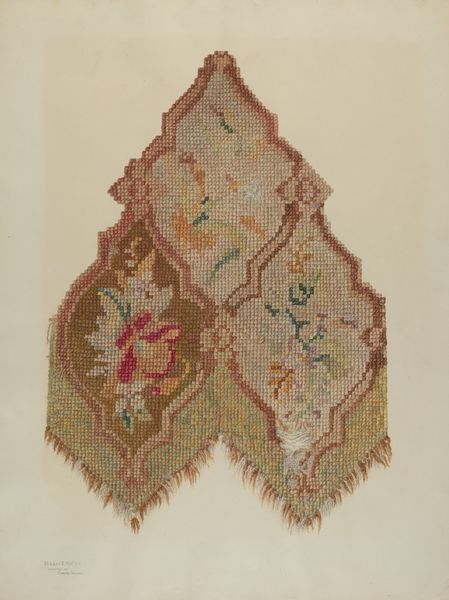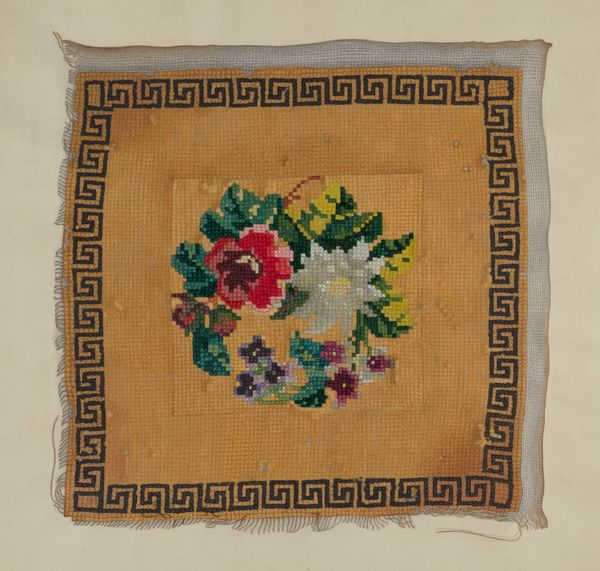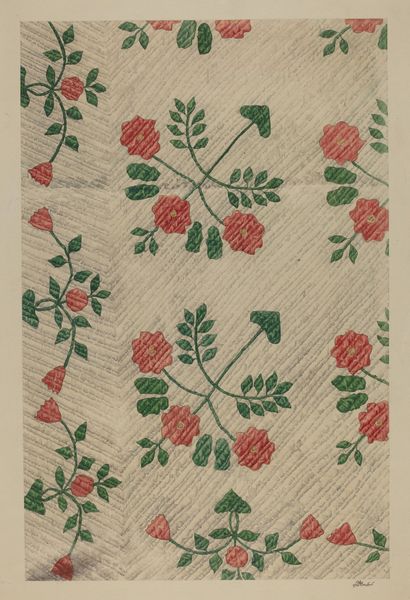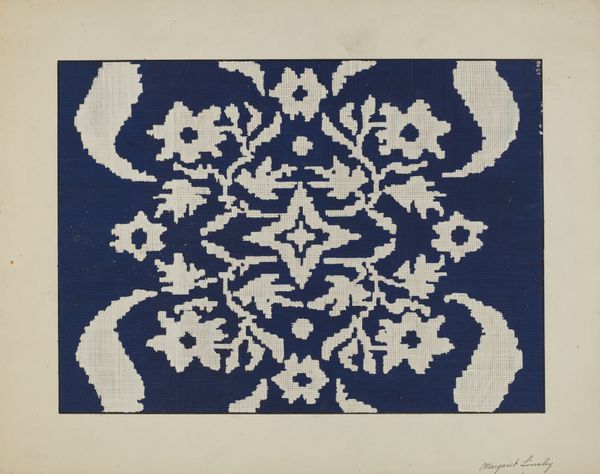
drawing, paper
#
drawing
#
natural stone pattern
#
paper
#
geometric pattern
#
ethnic pattern
#
geometric
#
repetition of pattern
#
vertical pattern
#
regular pattern
#
pattern repetition
#
textile design
#
imprinted textile
#
layered pattern
Dimensions: overall: 42.6 x 35 cm (16 3/4 x 13 3/4 in.) Original IAD Object: 48" wide; 72" long
Copyright: National Gallery of Art: CC0 1.0
Curator: At first glance, it just hums with a peculiar domestic tranquility, doesn’t it? Almost… kitsch. Editor: Let’s take a closer look at Renee A. Monfalcone’s "Afghan," created around 1941. What strikes you is the deliberate patterning and its manifestation of the artist’s creative design process with fiber-art, textile design and drawing, where the subject is portrayed in regular, imprinted, layered repetition patterns. Curator: Patterns within patterns! It's like a quilt someone’s grandma obsessed over during a particularly existential winter. The colors feel so warm, yet something about that repetitive geometric pattern almost induces a sort of unsettling hypnosis. Does it remind you of anything in particular, or is that just me? Editor: The insistent geometry, its almost compulsive rendering, might lead us towards thinking of textiles as both comforting and constraining, simultaneously an act of nurture, a space for self expression, as well as one which imposes regularity on something essentially unbound: thread. The bright, somewhat flat application of red brings that tension to the foreground. Curator: Yes, I totally get the push-pull feeling here. It feels almost architectural, like some imagined building constructed entirely from knitted fragments. The ethnic patterning grounds it again somehow, making me feel safe-ish in what could otherwise feel alienating! Is it a natural stone pattern do you think? I feel like there is nature hidden within. Editor: It is fascinating how these associations build; one may interpret what appears organic, like flower petals or leafy boughs against rigid planes and a vertical design, or regard the design with no overt symbolism beyond exploring geometries. Whether it appears an "ethnic" pattern really depends upon whether such descriptions carry genuine ethnographic or social relevance. Curator: Fair enough, and perhaps my reading too eagerly embraces assumptions! Anyway, for me, the overall piece speaks volumes about how order can paradoxically emerge from chaotic repetition; it reveals, perhaps, what it really feels like inhabiting that tenuous boundary! Editor: Precisely. "Afghan" shows how a deep engagement with technique and material translates personal reflections on domestic objects that can express individual creativity and wider narratives on regularity versus freedom of expression.
Comments
No comments
Be the first to comment and join the conversation on the ultimate creative platform.
